Day 3 of a three day Late Autumn Tour. It was a rather damp and grey day, but thankfully the rain we did encounter was mostly light and very intermittent, so we managed to fit in pretty much a full day and didn’t really even get wet.
It was forecast to rain this morning, so even though we drove into some brighter, dry weather on our way to the coast, we decided to play it safe first thing. We drove down to Wells for a look at the harbour. Below the seawall by the new lifeboat station, a Kingfisher was perched on a mooring rope in the outer harbour.

Before we could get the scope on it, the Kingfisher was spooked by a Herring Gull and disappeared behind the boats. We walked down towards the old lifeboat station and looked back along the far side, but it had disappeared. There were several Little Grebes on the water and a Curlew feeding along the water’s edge.
Looking across the harbour channel, there were lots of waders on the mud the other side. A good number of Oystercatchers were feeding on the mussel beds, the flocks of Knot occasionally whirled round and a little group of silvery grey Sanderling were out on the sands beyond, along with several Dunlin, Ringed Plover and Grey Plover. We got the scope on a Bar-tailed Godwit the other side, and then one appeared much closer, along the edge of the water just below us, giving us some nice close views.
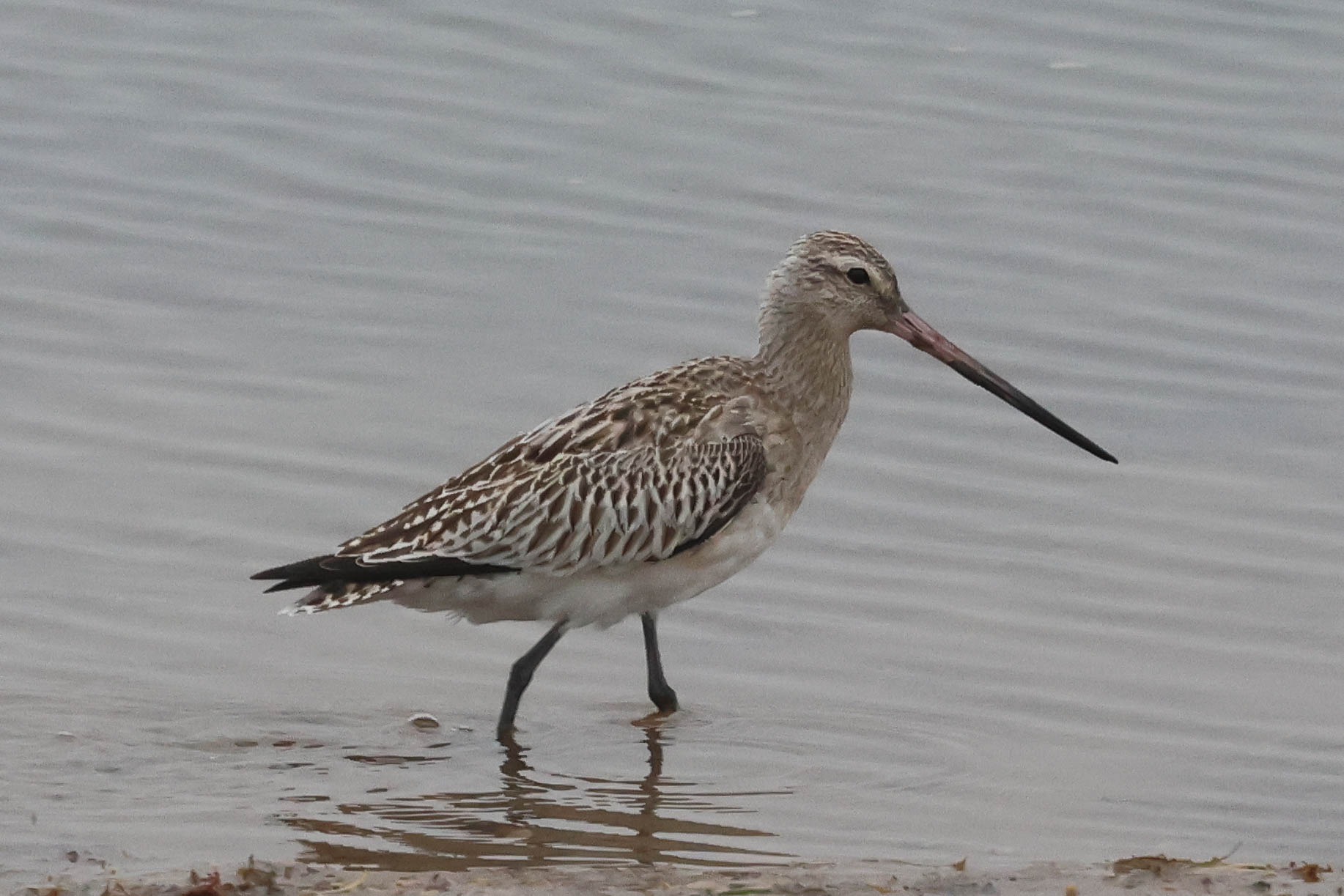
There were a few gulls out in the harbour too, mostly Black-headed, Common and Great Black-backed Gulls. We could just see the head of a Mediterranean Gull which was mostly hidden in a dip in the sand, but enough to identify it with its heavier and brighter red bill and more of a black bandit mask compared to the Black-headed Gulls nearby. A couple of Red Kites drifted over at one point, spooking all the waders up off the sands.
Scanning further up the channel, a Harbour Seal was pulled out on the sand on the far side. There were several Cormorants feeding in the water and we picked up a Red-throated Diver which made it’s way slowly towards us, diving repeatedly, and slowly right past in front of us.

As we feared, it had clouded over again, and it started to rain as we walked around past the Brent Geese feeding on the edge of the water. When we got back to the minibus, thankfully the rain quickly eased and it looked to be a little brighter away to the west, so we headed into the woods for a quick look in the trees. There were several Little Grebes on the boating lake, as we passed, and a rather damp-looking Grey Heron still roosting in the pines beyond.
In through the birches, we found a few tits dropping out of the pines – mainly Blue Tits, but with a couple of Coal Tits and Goldcrests with them. Three Jays disappeared off through the trees ahead of us as we walked round the east side of the Dell. We caught sight of a lone Long-tailed Tit as it flew round behind us and then noticed a lingering Chiffchaff in the top of the hawthorn it had just vacated, before it then flew off in the same direction.
Back out on the main track, we walked into the open trees the other side to scan the grazing marshes. A redpoll flew round overhead calling and was joined by a second, the two chasing each other off. We had just started to walk off when five redpolls flew back in and landed in a birch tree over in the far corner, so we turned round and headed over for a closer look. We could now confirm they were Lesser Redpolls, we could see a couple feeding on the tops of the reeds in amongst the bushes and then two flew in and landed in the birch above our heads. There were a couple of Reed Buntings in the bushes too.
With the weather improving, we decided to make our way round to Holkham and head out to the beach. But as we got back almost to the boating lake, we noticed some Bullfinches in the brambles by the path and stopped for a closer look. There were a couple of bright pink males and at least one female.
Then a larger flock of about twenty redpolls whirled round and landed in the tops of the birches behind us. Four were perched together in some bare branches in the tops and we could immediately see one was larger, even though the light was not great and they were all silhouetted. Repositioning ourselves, another larger bird appeared below started preening and we could see it had a distinctly paler rump – two Mealy Redpolls.
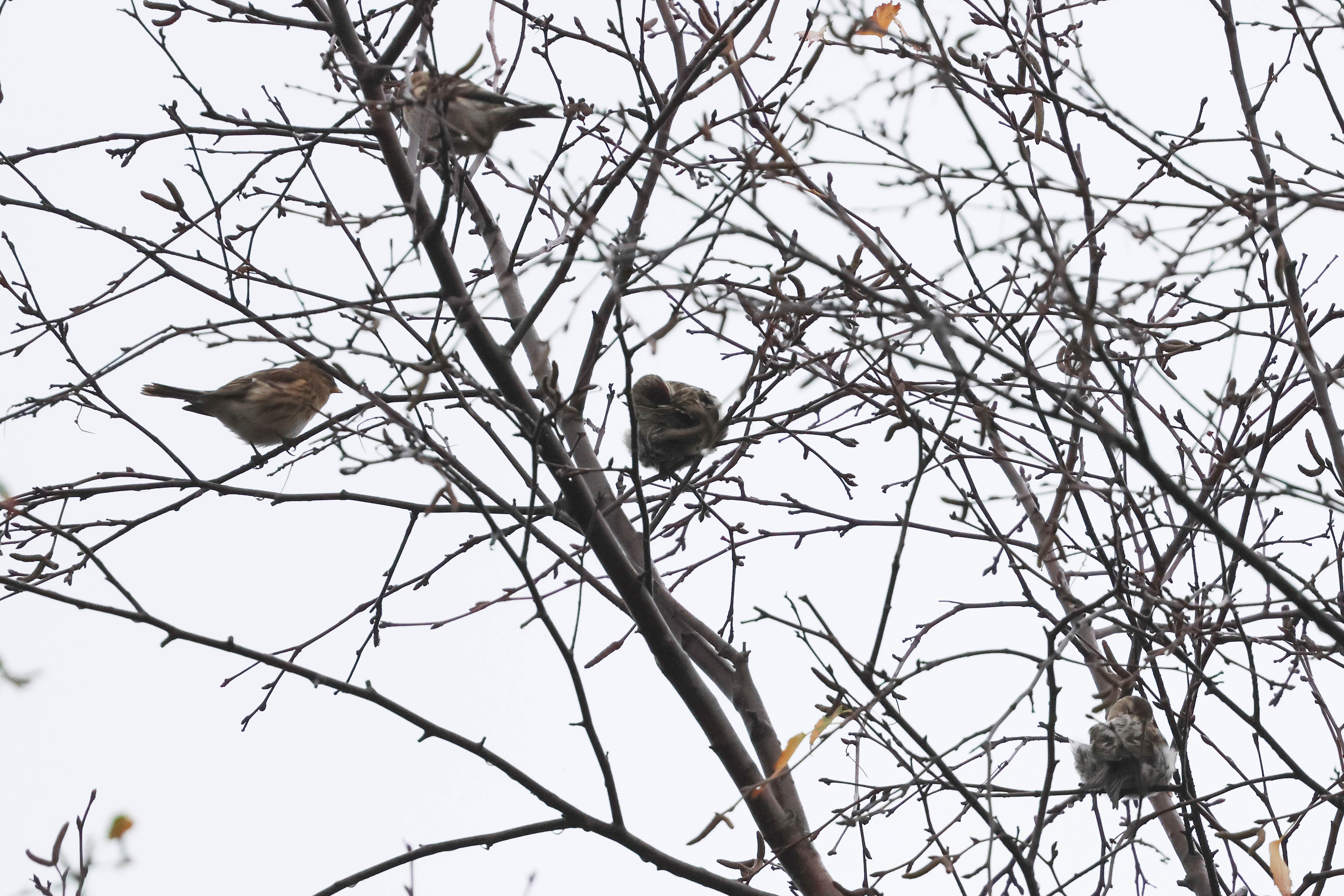
As we walked back to the minibus, two Fieldfares flew in over the trees and across the car park, disappearing over the caravan park beyond. Presumably migrants fresh in over the sea from Scandinavia.
Round at Lady Anne’s Drive, we had a quick look out over the grazing marsh as we got ready. Two Red Kites were perched in a bare tree with two Common Buzzards. There were only Greylag Geese feeding out on the grass today, although a small group of Pink-footed Geese flew over calling. As we walked up towards the pines, a couple of Jays flew out of the trees and a female Blackcap was feeding on blackberries beside the path, our second lingering warbler of the morning.
A large flock of Linnets was whirling round over the saltmarsh as we got to the far side of the pines and we could see lots of activity on the beach beyond – it looked like the RNLI were out playing with their new toys, the big new tractor/trailor unit for the new Wells lifeboat. Later they drove it past us over the sand, waving at everyone on the beach! As we made our way east on the edge of the saltmarsh, we could see a big party of Brent Geese feeding in the middle and a group of Black-tailed Godwits just behind.
When we got to the cordon, we stopped to scan and it didn’t take too long to find the Shorelarks, right down at the far end. After a quick look through the scope in case they flew, we walked further on for a closer look. Several had stopped to preen out in the middle of the cordoned area and we had a great view of them through the scope – their yellow faces and black masks. A couple more were creeping around behind feeding, and eventually we managed to get all six Shorelarks in view at the same time.
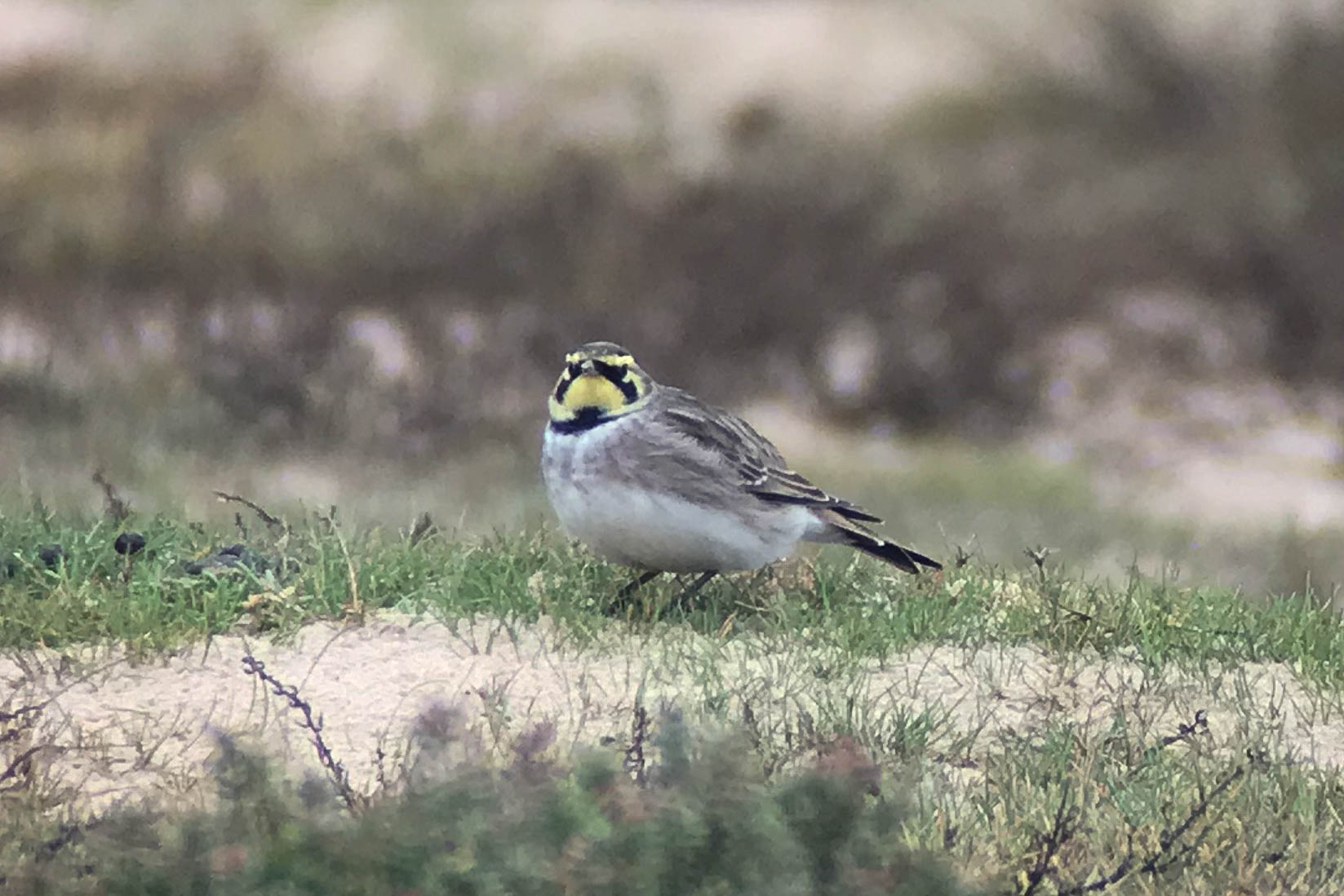
Always one of the highlights of winter, hopefully the Shorelarks are now here for the season. After watching them for a while, we continued on out to the beach.
The tide was quite well out, but scanning the sea with the scope we quickly picked up the six Velvet Scoters just offshore. Thankfully they were keeping separate from the hundred or so Common Scoter nearby, making them easy to get everyone on to today. Even more helpfully, they then had a fly round showing off their distinctive white wing flashes.
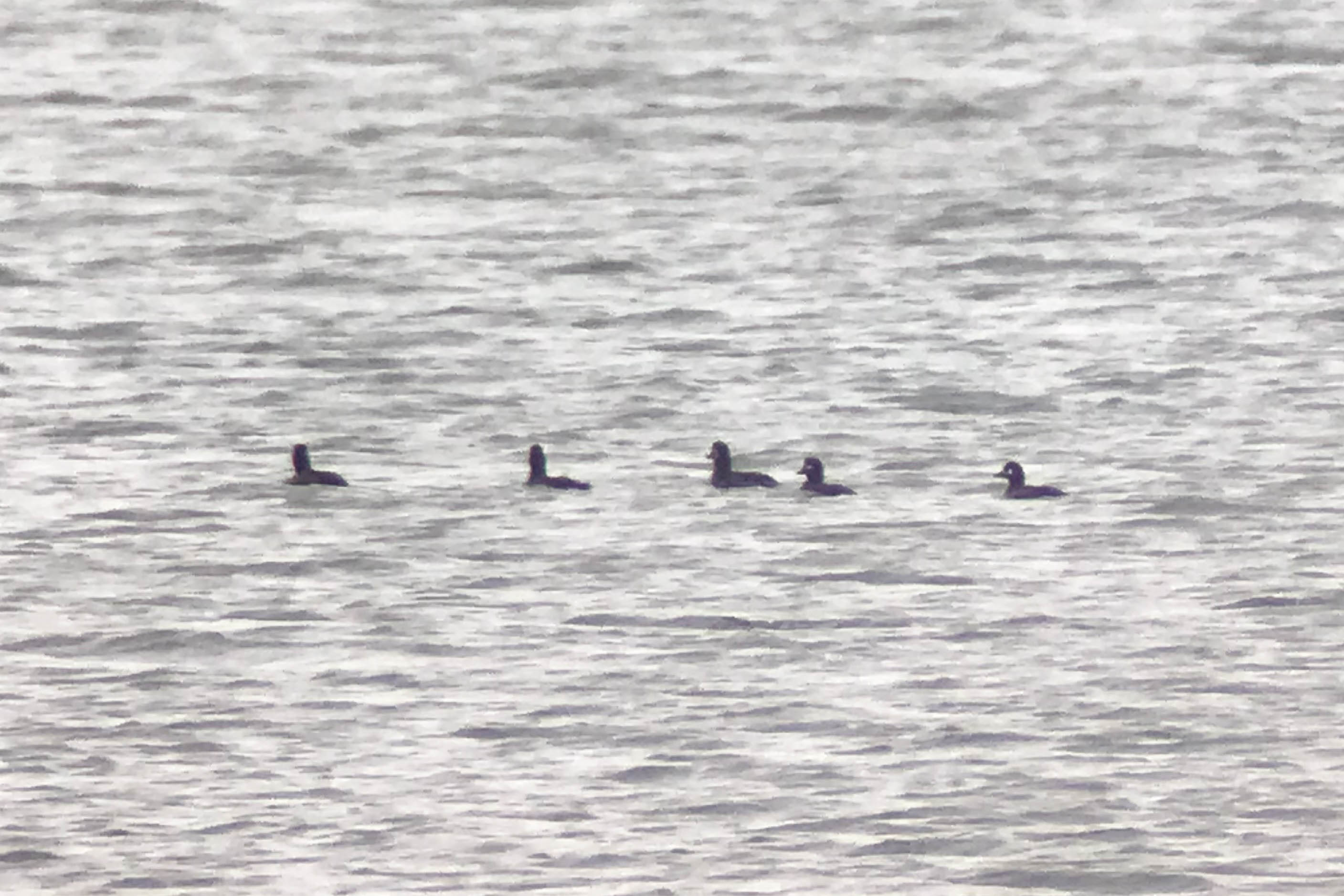
A smart drake Eider was also on the sea nearby, along with a single Red-breasted Merganser. A few more Mergansers were further off to the east, on the water between the sandbars. There were several Red-throated Divers offshore and Great Crested Grebes, but we couldn’t find any of their rarer cousins today, as well as one or two Razorbills.
It was that time of day and everyone was starting to get hungry, and it started to spit with rain again now, so we didn’t linger too long. We had been very lucky with the nice dry weather window to allow us to get out here for a couple of hours. The Shorelarks were closer to the edge of the cordon, so we stopped for another quick look as we passed. Then it was back to The Lookout for lunch.
After lunch, we drove over to the far end of Holkham Park to scan the grazing marshes. There was no sign of any egrets with the Belted Galloways today and we couldn’t see anything obvious with any of the more distant cattle either, although they were mostly hidden behind the reeds. We did eventually find a single Great White Egret in one of the ditches. A large white bird dropping in to the pool out in the middle – a single Whooper Swan. They are arriving for the winter now.
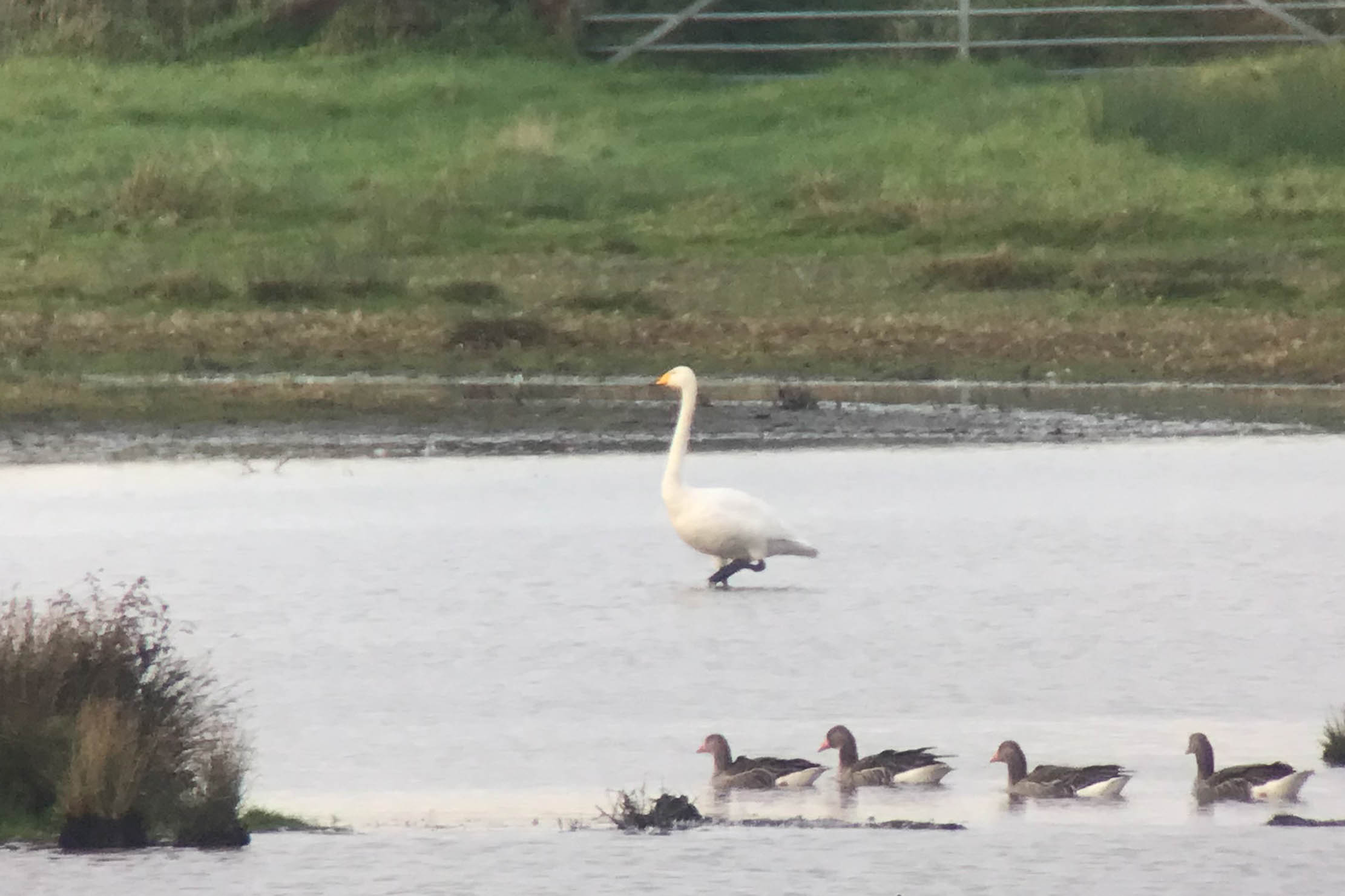
There were several Red Kites and Marsh Harriers out over the marshes and a couple of pale Common Buzzards perched distantly on bushes. One Marsh Harrier landed on the grass closer to us and we could see it had green wing tags bearing the code ‘9C’. It turns out this bird was tagged on the same day back in June 2018 as ‘9I’, which we saw on our Autumn Tour back on 6th October, and in the same place in the Broads but from a different nest. It is thought they might even share a father – a polygamous male with two females. ‘9C’ had not been reported since 2018. An amazing coincidence!
A Great Spotted Woodpecker flew over our heads and landed in the bare branches in the top of one of the trees out in front of us.
We made our way back east and stopped again briefly the other side of Wells. We had a quick look at the pools – there were lots of ducks, mainly Teal, Lapwing and gulls on the water at the back. Walking down the track, we could see a good number of Pied Wagtails on the mud. There have been Water Pipits reported here in recent days, but all we could find now were a couple of Rock Pipits and several Meadow Pipits. It can be a good place for snipe, but all we saw today was a single rather sickly looking Dunlin crouched on the mud.
We were heading for Blakeney to see if we could find any owls to finish the tour. It was still dry as we arrived and set off along the bank, but it was already clouding over again from the south. We could hear Bearded Tits pinging in the reeds and saw one as it flew across. We could hear more still, so stopped to see if another might show itself. There were lots of Starlings gathering on the top of the mill and a Kestrel on one of the sails. A Common Buzzard perched on a dead tree the other side and a couple of Marsh Harriers drifted across towards Cley. With the cloud, the light was already starting to go and then it started to rain, so with everyone heading home tonight, we decided to call it a day.
We did manage to get another owl on our way back. Driving past some barns, we noticed a shape on the roof silhouetted against the last of the light – a Little Owl. These are the barns which are currently being developed into houses, and we haven’t seen the Little Owl here for a couple of months so thought it might have deserted the site already. A nice bonus to find it still here and finish off our three days.
















